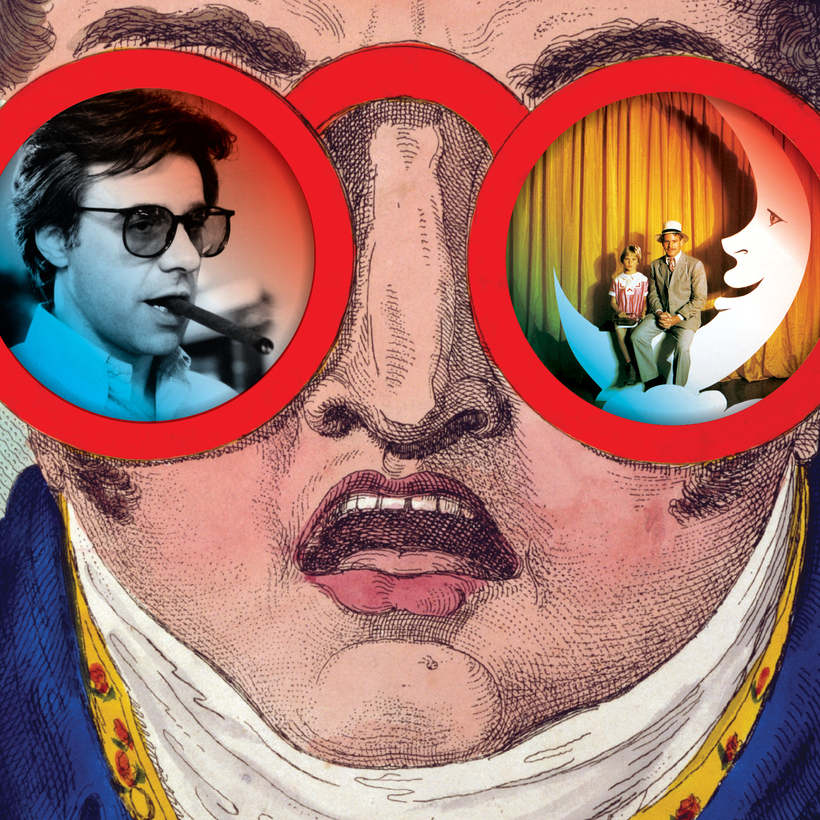A few years ago, I got a call from Peter Bogdanovich. He wanted me to play a small part in a romantic comedy he was directing called Soup to Nuts, with Jennifer Aniston and Owen Wilson. Peter had written the screenplay with his wife Louise Stratten, the sister of Dorothy Stratten—long story there. I was to play Owen’s driver.
Even among small parts, this part was small, and when it came to the final edit (and a change of title to She’s Funny That Way), it became microscopic—that is to say, not at all. It was a shame audiences never got the chance to see me drive the car three feet with Owen in back. But such is the heartbreak of the film business, and there were no hard feelings on my part.
Earlier this week, I received an e-mail from Peter. He had sent me the DVD of a documentary on Buster Keaton that he had directed, as well as a charming “Year and a Day” calendar based on the works of Robert Graves, which he had edited and would send out to friends. I had written to thank him for the gifts, and he wrote back to see if I could help find a publisher for the calendar going forward.

“Thought you might have some ideas as to where it would be most appreciated,” he wrote. “If you read through it, you’ll see it has a lot of very interesting information. It seems to me the climate is better prepared for this calendar than it ever was before. It’s matriarchal and does a much better job as a calendar than the Gregorian version: 13 months of 28 days each plus an extra day is a lot easier to remember than ‘30 days hath September, April, June, and November … etc.’”
That was on Monday. On Thursday word came that Peter had died at his home in Los Angeles at the age of 82. This is a loss on so many levels.
Peter’s career was one of great pulsations often followed by rough periods of unemployment, tabloid headlines, and self-doubt. He was part of the new wave of American filmmakers, alongside Francis Ford Coppola, Steven Spielberg, William Friedkin, Brian De Palma, George Lucas, and Martin Scorsese. They were directors who ruled not only Hollywood box-office tallies but awards stages.
Peter’s masterpieces were The Last Picture Show and Paper Moon, the former now a half-century old. He had abiding respect for the artists who came before him and developed lifelong friendships with Howard Hawks, John Ford, Alfred Hitchcock, and, most famously, Orson Welles. It was fitting that younger directors like Wes Anderson and Noah Baumbach saw in Peter the great talent that he was and flocked to his side. For long stretches he worked like an old studio hand, directing mini-series and appearing in episodes of Law & Order, The Sopranos, The Simpsons, and How I Met Your Mother.

For the past year he was working on a screenplay about George and Ira Gershwin, with my longtime colleague Sam Kashner. You will hear more of that collaboration in a coming edition of AIR MAIL. The idea for the film had come from Louise. And word has it that Guillermo del Toro was interested in producing it. Perhaps with the attention given to Peter’s death, the interest from one of the streaming services will shift into high gear.
Peter’s career was one of great pulsations often followed by rough periods of unemployment and self-doubt.
You may already know this, but Peter started off as a critic. And, indeed, you could say his final job was as a critic. Just last month he wrote for AIR MAIL—a rave for Bob Gottlieb’s new biography, Garbo. A little less than a year ago he reviewed film scholar David Thomson’s A Light in the Dark: A History of Movie Directors for us. I loved working with Peter. He took an assignment, hit his mark, and got it in on time. And he delivered it in the editor’s favorite format: double-spaced. It could fairly be said that Peter Bogdanovich’s writing, like the man himself, was crisp, elegant, and, above all, generous to the very end.
Graydon Carter is a Co-Editor of AIR MAIL


